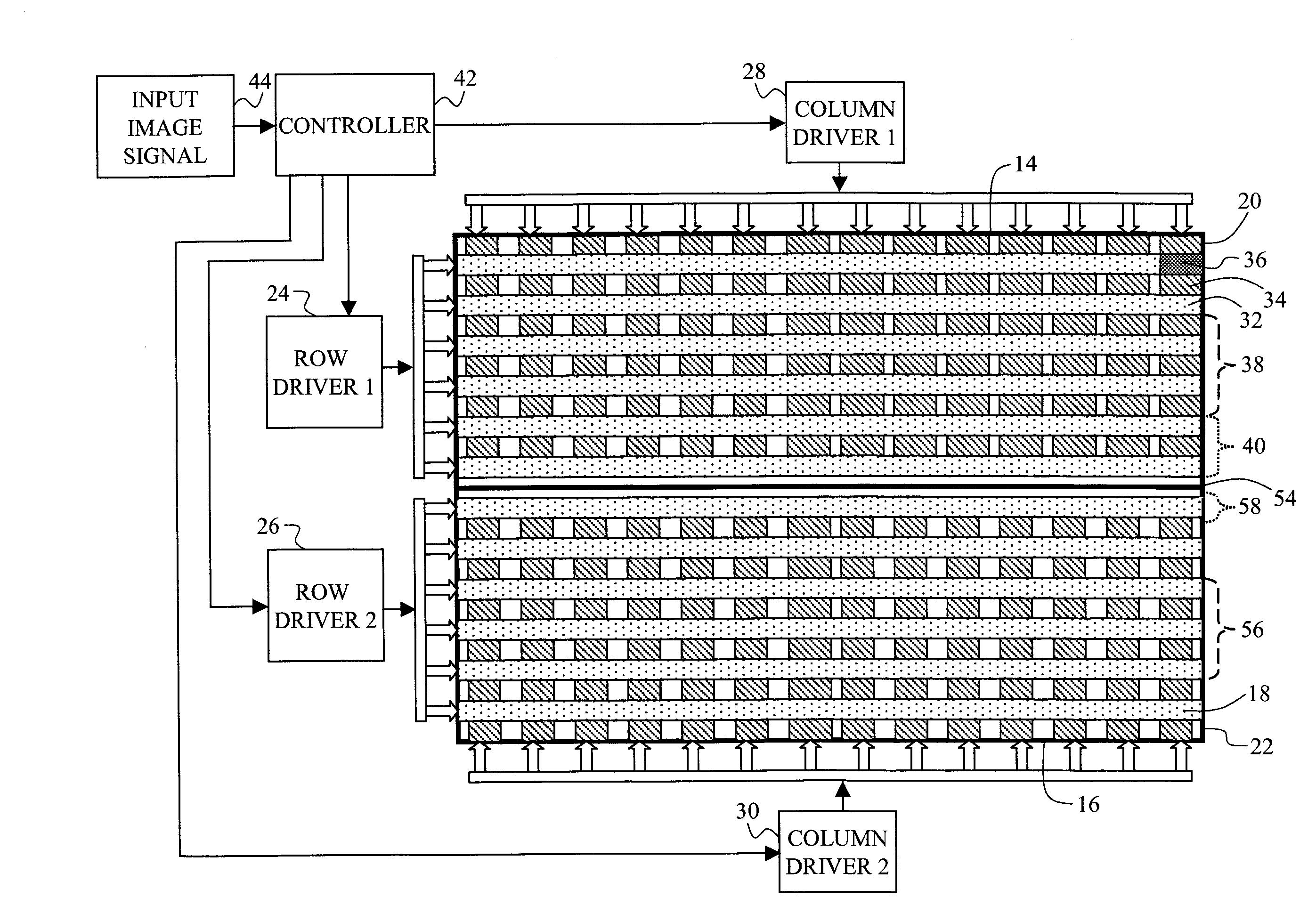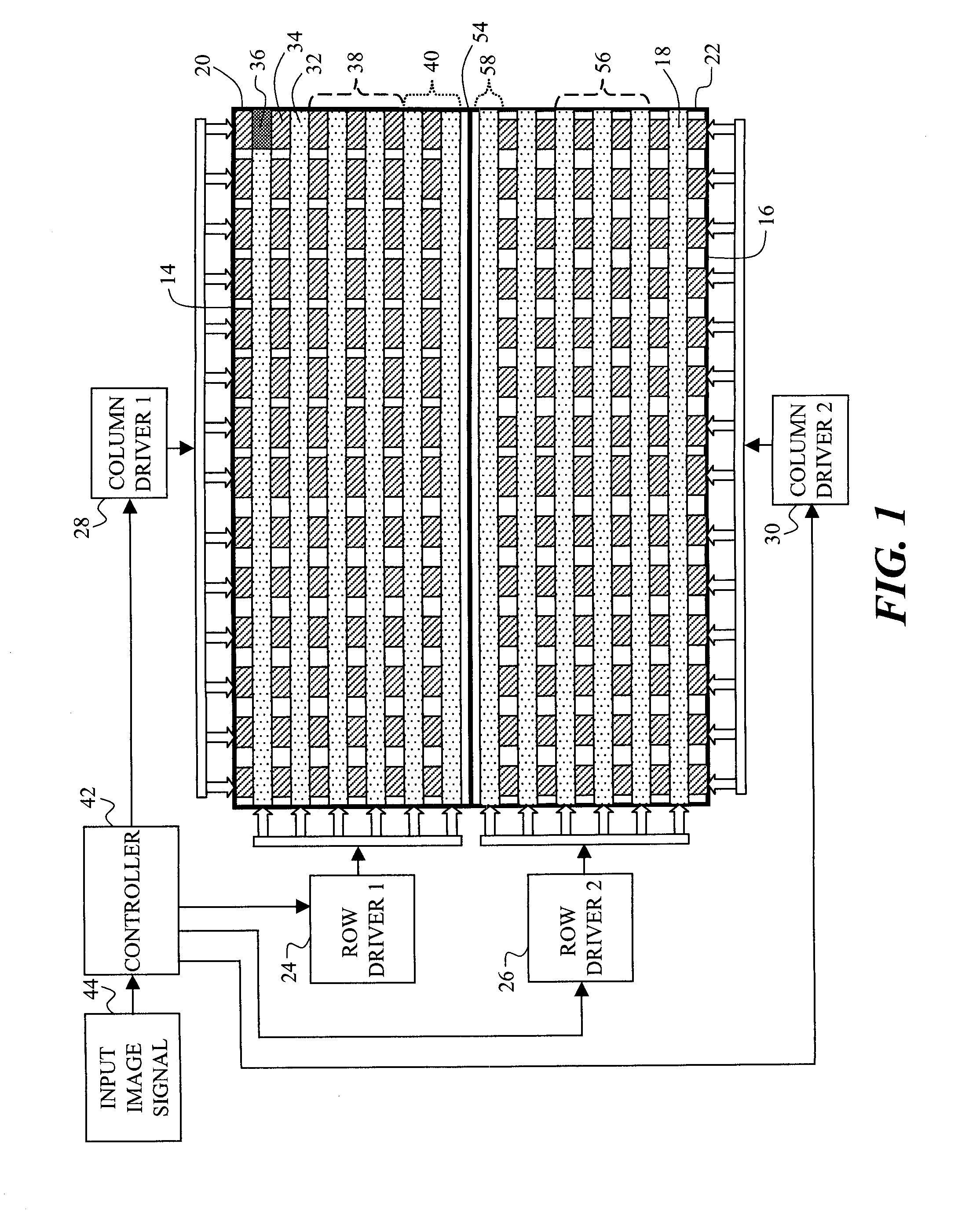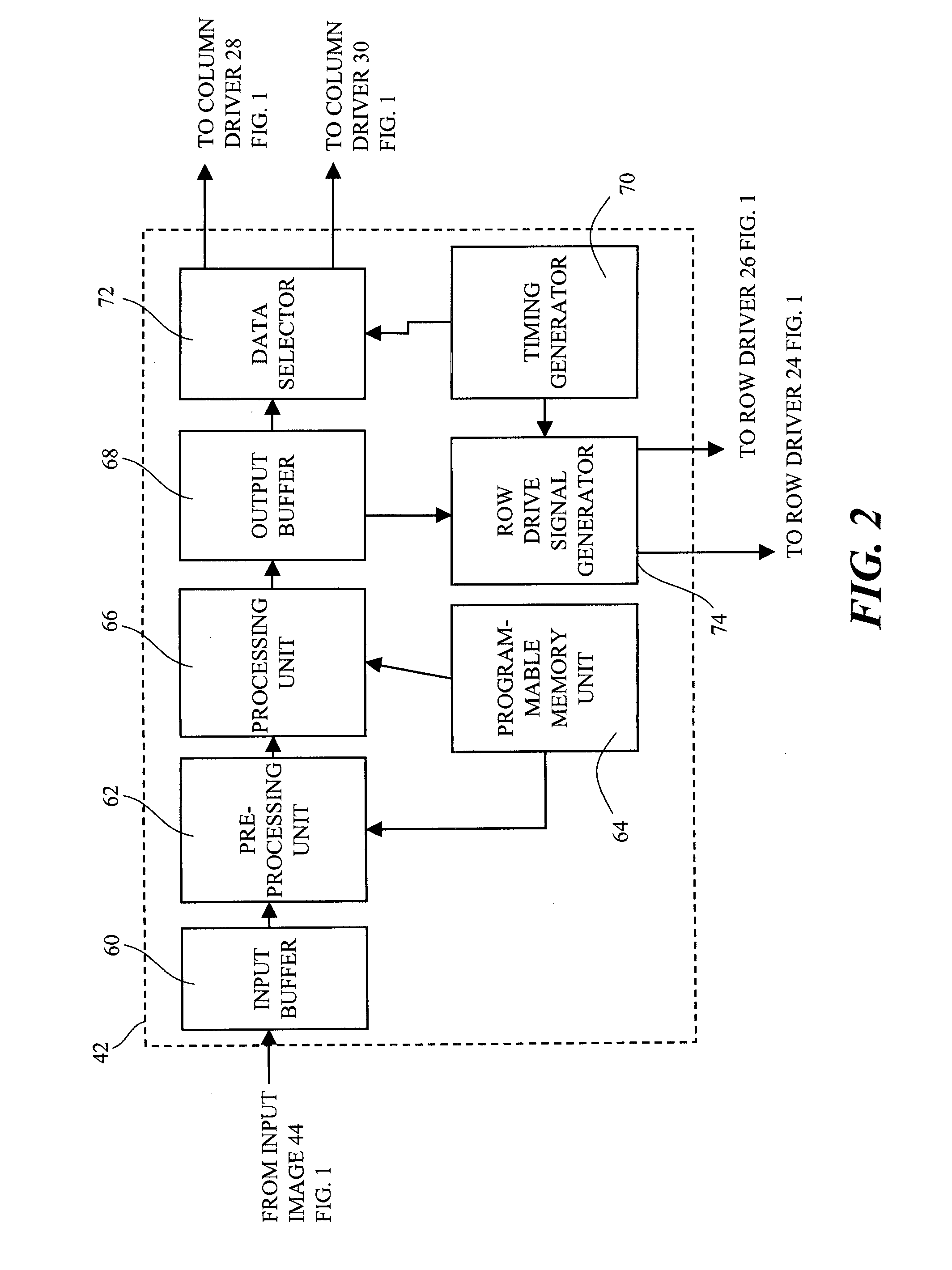Tiled passive matrix electro-luminescent display
a passive matrix and electroluminescent display technology, applied in the field of passive matrix electroluminescent display, can solve the problems of reducing the quality of the display, affecting the display, and consuming a lot of power, and achieve the effect of less power and higher resolution
- Summary
- Abstract
- Description
- Claims
- Application Information
AI Technical Summary
Benefits of technology
Problems solved by technology
Method used
Image
Examples
example 1
Comparative
[0050]In this example, a display having two tiles 20, 22, each tile having 120 row electrodes 32 and 240 column electrodes 34 will be assumed. Further, it will be assumed that each tile has its own row driver and column driver. Further, each tile will have its own controller 42 and each controller will receive only the portion of the input image signal 44 that corresponds to the spatial locations of the light-emitting elements 36 within the tile 20, 22 that it controls. Therefore, the two controllers will not be able to respond to changes in luminance within the input image signal that occur in the input image signal that correspond to the spatial location of light-emitting elements in the adjacent tile. This design is consistent with prior art embodiments, in which the input image signal is parsed and delivered to each tile for rendering.
[0051]The input image signal 44 will include information for rendering two dark gray bars on a white background. The dark gray bars wil...
example 2
Inventive
[0053]In this example, a tiled, passive-matrix, EL display is created according to an embodiment of the present invention. It includes two EL tiles, each EL tile including an array of 120 rows and 240 columns of light-emitting elements, each light-emitting element being formed from a light-emitting layer that is sandwiched between an orthogonal array of row and column electrodes. The tiled, passive-matrix, EL display includes at least one row and column driver for controlling the flow of electrons between the row and column electrodes within each tile to control the emission of light from each of the light-emitting elements within each tile. The tiled, passive-matrix, EL display further is assumed to include one controller coupled to the row and column drivers for receiving an input image signal and for simultaneously providing a predetermined number of row drive signals to two or more row drivers within the two or more EL tiles, with a first exception that when the boundar...
PUM
 Login to View More
Login to View More Abstract
Description
Claims
Application Information
 Login to View More
Login to View More - R&D
- Intellectual Property
- Life Sciences
- Materials
- Tech Scout
- Unparalleled Data Quality
- Higher Quality Content
- 60% Fewer Hallucinations
Browse by: Latest US Patents, China's latest patents, Technical Efficacy Thesaurus, Application Domain, Technology Topic, Popular Technical Reports.
© 2025 PatSnap. All rights reserved.Legal|Privacy policy|Modern Slavery Act Transparency Statement|Sitemap|About US| Contact US: help@patsnap.com



